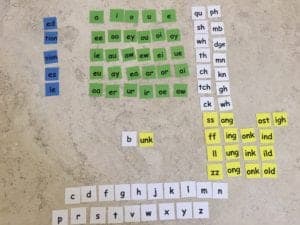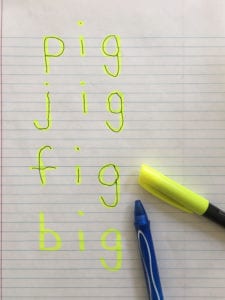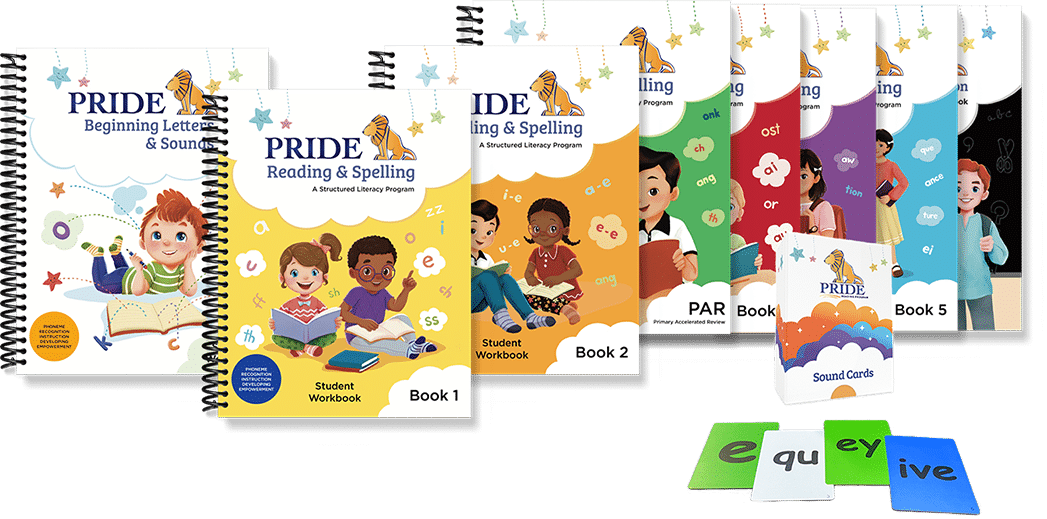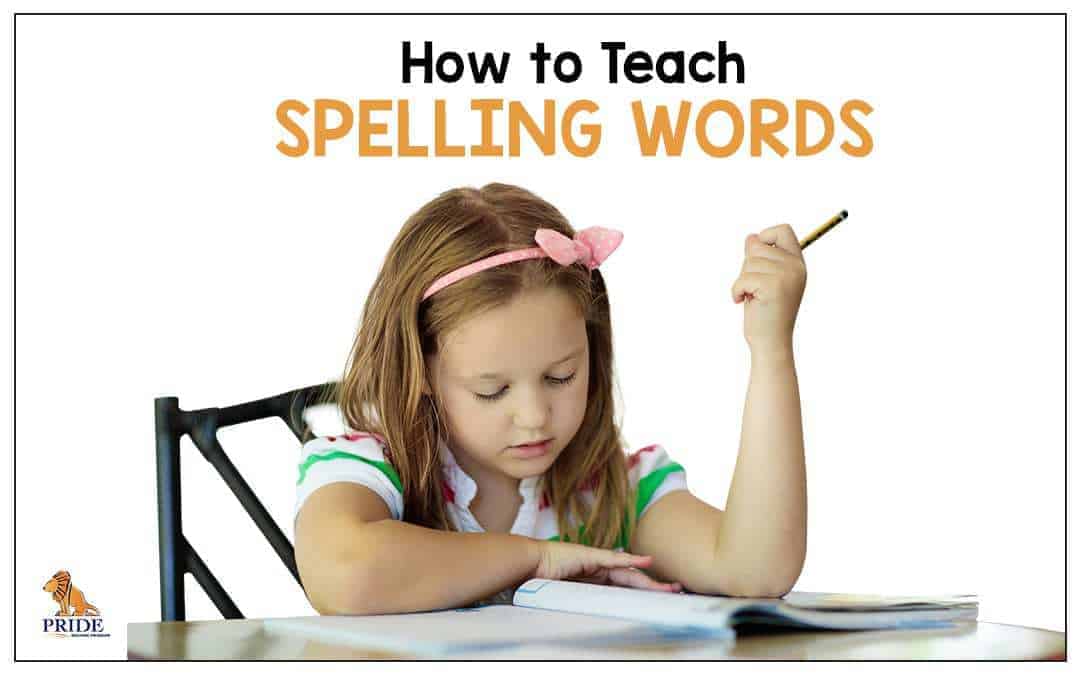Teaching spelling words can be a daunting task, but it doesn’t have to be! There are many different methods and strategies that can help your students learn and remember their spellings. In this blog post, I will discuss the best ways to teach spelling words. I will also provide some helpful tips and resources that you can use in your own classroom. Let’s get started!
Teach Spelling Words with Systematic Phonics
First, you will want want to focus on systematic phonics instruction. Research has shown that the most effective way to teach spelling is through systematic phonics. Spelling should be taught in a logical order that makes sense to the student. Just picking random words without any connection to a lesson is not a successful way to teach spelling. This strategy helps the student learn, practice, and progress to the next spelling concept while constantly reviewing already ‘learned’ spelling concepts.
Systematic Phonics Instruction in spelling should include:
- consonants and short vowel sounds
- digraphs and blends
- long vowels and other vowel patterns
- syllable patterns
- base words, roots, prefixes, and suffixes
If you would like to see an example of a systematic phonics Scope and Sequence click HERE
Teach Spelling Words with Orton-Gillingham
Besides using systematic phonics in your spelling instruction, you will also want to use a structured literacy approach such as the Orton-Gillingham method. Orton-Gillingham is a multisensory approach that was developed to help individuals with dyslexia learn to read and spell. However, this approach can be used with all students in the classroom.
Orton-Gillingham uses all three learning channels: auditory, visual, and kinesthetic. This means that students will learn spelling words by seeing them, hearing them, and writing them. It is structured and sequential. Orton-Gillingham starts with the most basic spelling rules and gradually builds up to more difficult spelling patterns.
This method is also flexible, which means that it can be adapted to meet the needs of each individual student. You can take this FREE Orton-Gillingham Introduction Course if you would like to learn more about Orton-Gillingham and Structured Literacy.
Teach Spelling Words with Multisensory Activities
Next, it is important to use multisensory activities. Multisensory activities are activities that use more than one sense. Using multisensory activities is a great way to engage all learners and help students remember spelling words.
For example, when teaching the spelling word ‘cat’, you could have students see the word (visual), say the word (auditory), and feel the word (tactile).
1. Letter Tiles
One way to help students learn spelling words is by using letter tiles. Letter tiles are a great way for students to manipulate and play with spelling words. They can be used to build words, spell words, and make words.
Letter tiles are also a great way for students to learn spelling patterns. For example, if you are working on the spelling pattern /ai/, you can have students build and spell words with that spelling pattern using letter tiles.
If you don’t have letter tiles, you can use any type of manipulative that you have in your classroom. This could be magnetic letters, Scrabble tiles, Uno cards, etc.

2. Playdough
Another way to help students learn spelling words is by using playdough. Playdough is a fun way for students to play but also learn spelling words. Some ideas on using playdough in spelling include:
- Use a pencil, chopsticks or even a golf tee and write the spelling words onto the surface of the playdough.
- Stick letter tiles onto the playdough so that they stand up and build the spelling words.
- Use letter magnets and letter stamps onto the surface of the playdough to build the spelling words.
- The students can also build the spelling words with the playdough by forming it into the letter shapes.
3. Use Shaving Cream
This activity never gets old! Spread shaving cream out on a flat surface or tray and have the students write out the letters or words or sentences. This is really messy but oh so fun! You can change it up by using pudding or whipped cream. You can also put shaving cream on a mirror in the bathroom – makes cleaning up a bit easier. Be creative and have fun!

4. Trace Over Highlighter
Students can trace over spelling words. This is a great way for students to feel the word as they are spelling it. Using a highlighter, write spelling words on a piece of paper. Now let your student pick out their favorite color pen and trace over your letters.

5. Sky Writing
Another great multisensory activity that really helps students feel the word as they are spelling is called Sky Writing. When Sky Writing, the students spell each word in the air by visualizing the word. You can then have your students close their eyes and ‘write’ the word a few more times in the air in front of them while naming the letters aloud.
6. Visualize the Word
Ask your student to close their eyes and visualize the word. Ask questions such as, “How many letters are in the word?” and “Can you spell the word backwards” or “What is the second letter? The third? The fifth? etc.” This really helps the student visualize and learn the spelling word.
7. Dictation
You can also dictate words and sentences with the target spelling rule to make sure the students are applying the concept correctly. The words and sentences that you dictate can include all the previously learned spelling concepts for review.
Watch Ms. Renee use various multisensory activities to help students spell multisyllabic words in this short video:
Finally, when teaching spelling words, it is important to use a variety of methods and strategies. By using a variety of methods and strategies, you will be able to engage all learners and help students remember spelling words.
If you would like to learn more about spelling multisyllabic words, click HERE.
If you would like to learn more about Dyslexia and Systematic Phonics click HERE.
If you would like to learn more about spelling with Orton-Gillingham click HERE.
Thank you for reading! I hope you found this blog post helpful.:)
Happy Teaching! – Karina Richland
Please don’t leave without checking out the PRIDE Reading Program. The PRIDE Reading Program is an Orton-Gillingham curriculum that is used by teachers, tutors, and homeschooling parents worldwide with great success.


Karina Richland, M.A., is the author of the PRIDE Reading Program, a multisensory Orton-Gillingham reading, writing and comprehension curriculum that is available worldwide for parents, tutors, teachers, and homeschoolers of struggling readers. Karina has an extensive background in working with students of all ages and various learning modalities. She has spent many years researching learning differences and differentiated teaching practices. You can reach her by email at info@pridereadingprogram.com or visit the website at www.pridereadingprogram.com

